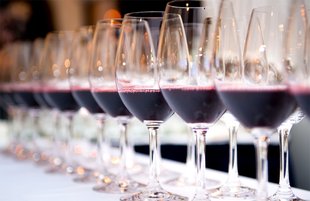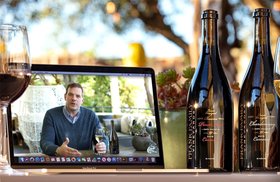Guide to Wine Color: What Does It Tell You & How To Evaluate It
When sipping a glass of wine, one of the first things you’d notice is the wine color.
The colors of red, white, and rose wine have subtle nuances that can be quite revealing! By examining the color spectrum carefully, you’ll get insights into the wine’s age, style, and taste.
Let’s find out all about wine color, including how to evaluate the different wine color variations like an expert. We’ll also show you how to build a collection of red, white, and sparkling wines effortlessly.
Further reading
- Check out the 5 Types of Wine You Should Know of.
- Curious about the world’s best wine? Here are the 15 of the Finest Wine Brands.
- Find out how to properly store your brand new bottle of wine with this Ultimate Guide to Wine Storage.
What Does Wine Color Mean?
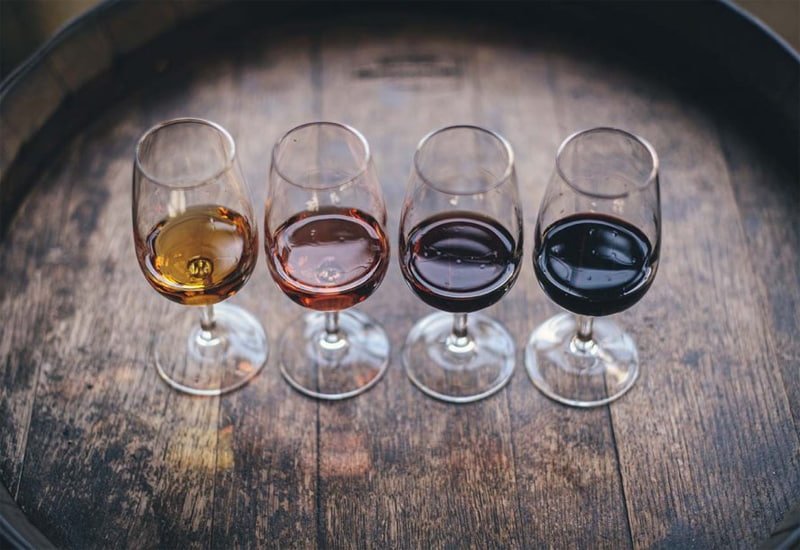
In general, there are five general wine color categories:
- Red
- White
- Yellow
- Pink
- Orange
These broader wine colors hint at what to expect from the wine you’re drinking. You’ll be able to assess the tannin levels, acidity, sweetness, and flavor profile just by observing the color of your wine.
For example, a dark red wine like Nebbiolo or Mourvedre usually has high acidity, a rich tannin texture, and more concentrated flavor notes.
In contrast, a brighter red wine like Pinot Noir or Beaujolais indicates a lighter-bodied and fruity wine.
Pale yellow or whitish wines like Chenin Blanc, Pinot Blanc, Pinot Gris, or Sauvignon Blanc are most often dry.
A golden-yellow wine indicates a fuller-bodied or sweet wine like Chardonnay or Riesling.
What about the more unusual orange wines?
They’re made with white grapes, but their tannin levels are much higher, and the color more concentrated than regular white wines. That’s because the grape skins macerate with the juice as in red wine fermentation.
Rose wine color (which can vary from pale salmon to intense pink hue) is largely determined by the winemaking method.
Let’s explore what creates the color of a wine
How Does Wine Color Form?
There are several aspects that affect the grape color, including:
1. Grape Variety and Terroir

Wine color is greatly affected by the grape variety, growing conditions, and the terroir.
All wine grapes (Vitis Vinifera) contain pigments in their skins.
For example:
- White wine grapes contain flavonoids which give the wine its distinct yellow color.
- Red wine grapes contain anthocyanin compounds which give the wine a purple red color.
Red grapes can have about 20 types of anthocyanins (each with different pH levels.)
The lower the pH, the lighter the wine. On the other hand, higher pH levels indicate a wine with a darker color, higher tannin and acidity levels, and a longer aging potential.
Usually, all colour pigments are contained in the grape skins while the grape pulp is transparent. That’s why it’s possible to make white wine from red grape varieties. For example, Blanc de Noir Champagne is made with Pinot Noir grapes.
Fun fact: Some rare red wine grapes actually have red-colored pulp. They are called Teinturier grape varieties and are a natural mutation of the traditional wine grapes.
Another factor that determines the wine color is the grape skin thickness. Thicker-skinned grapes like Cabernet Sauvignon and Merlot lend more colour to the wine than thinner-skinned grapes like Gamay.
The vineyard climate also determines the grape skin thickness. Warmer climates usually produce grapes with thicker skins (since the grape vine is trying to protect the fruit from the sunlight and heat.)
2. Winemaking Techniques

During winemaking, the color from the grape skins seeps into the grape juice.
The color intensity at this stage is determined by:
- Maceration period: The maceration time frame for optimal color extraction is usually up to eight days. If maceration is prolonged beyond this, the color will be less intense.
- Fermentation compounds: The color intensity might reduce if the wine is fermented with whole grape bunches or from extended contact with the lees (since they might absorb some of the colors.)
- Winemaking techniques: The winemaker can implement cold maceration before fermenting the wine juice or use other methods for increasing the co-pigmentation (stimulating the release of phenolic compounds into the grape juice.)
3. Aging
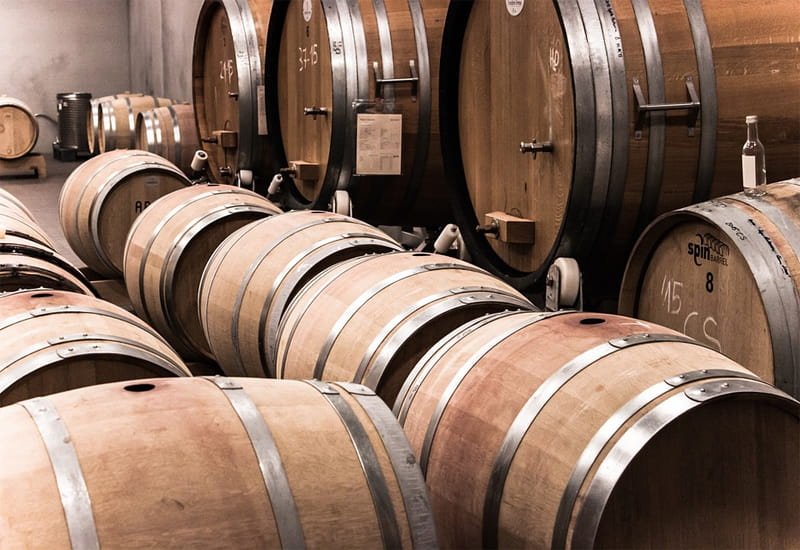
The wine's color is also affected by the oxidation levels of the wine during aging.
A wine can be aged in:
- Stainless steel tank: This creates a reductive environment (the wine ages in the absence of oxygen), preserving the wine's color, freshness, and fruitiness.
- Oak barrel: This environment is oxidative and might result in a slightly paler color.
The color and anthocyanin concentration in wine can, in turn, affect the wine’s aging potential. The higher the concentration, the higher the reductive strength of the wine (oxidation resistance) and the higher the aging potential.
Next, let’s check out the different color charts so you’re prepared for your next wine tasting experience.
Red Wine Colors
Red wine comes in over 40 different color variations. You’ll be able to picture the red wine color spectrum using the table below:

Keep in mind that the color might be slightly different for a young red wine and an older red wine of the same style. That’s because the intense red color of a young wine gets a pale brownish shade gradually over time.
Also, the color of red wine with high sulfite content might not be as bright since the sulfites bind with the color pigments and reduce the color intensity.
White Wine Colors
When it comes to white wine, the color spectrum is just as varied. You can stumble upon paler white, amber, or even golden-honeyed wines.
Here are the main white wine colors to be aware of:

White wine color also tends to change with time.
For example, a young wine made with white grapes might have bright yellow or even greenish shade. In contrast, an older white wine takes on a warm golden color.
Rose Wine Colors
Here are the main rose wine color nuances:
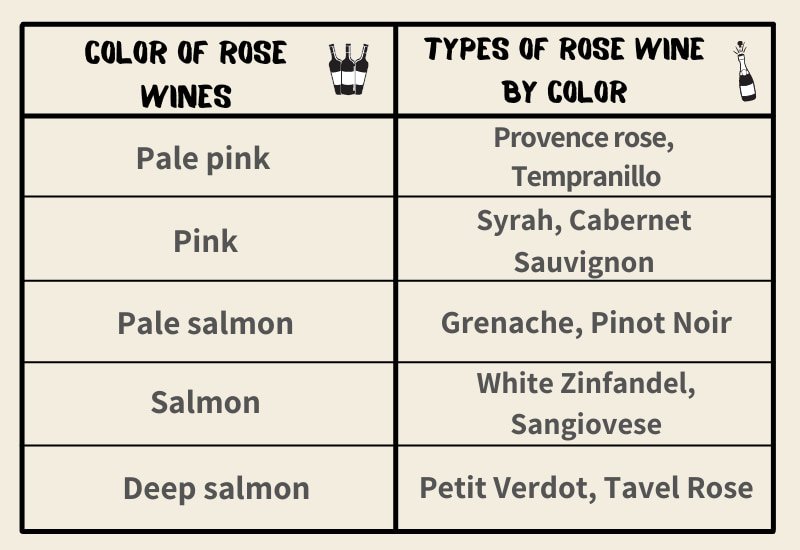
The color of the blush wine is determined during winemaking.
Pink wine is made with red grape varieties. However, the color is not fully extracted. Usually, the longer the black grapes are in contact with the wine juice, the more concentrated the pink wine color.
So, how can you better understand the color of your next glass of wine?
How to Evaluate the Color of Wine
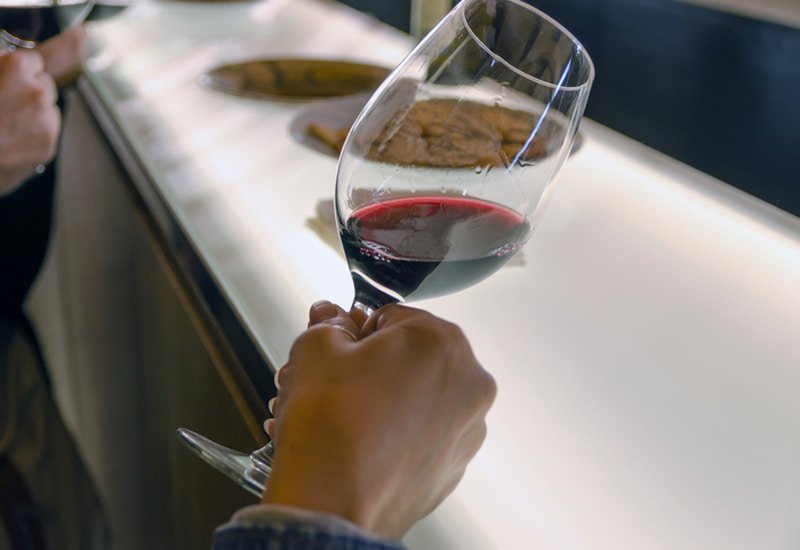
It’s a good idea to examine the color of your wine before tasting it.
During this stage of your wine tasting experience, look for the following:
- Wine clarity: Ideally, the wine liquid should be clear. Any cloudiness or dust specs indicate the presence of segments in the wine. These are not harmful to you, but they might change the wine’s taste negatively.
- Wine color intensity: Understand how dense the color is. You should have no more than half a glass of wine to do that. This way, you can tilt the glass without worrying you might spill it. Tilt the wine glass to observe the wine color or hue spectrum and how its intensity changes. You can put your glass against a white background so you can isolate the color of the wine from any external colors that might change its appearance.
- Wine legs: These are the droplets that form along the edges of your wine glass after you swirl the wine. Some wine tasters interpret wine legs as an indicator of alcohol content, suggesting a richer texture and fuller body. However, there’s no evidence to suggest that legs indicate quality.
Observing the wine color can give you a general first impression of what you’re about to taste. With more experience in observing the different wine colors, you might even be able to recognize:
- The different wine grapes
- The terroir they come from
- The winemaking specifics
While attending wine tasting events is fun, you might want to start building your own private collection of fine wines to do your own tasting events.
This way, you can explore some of the best wines in the world (while also potentially reaping profits!)
Here’s the easiest way to do it:
Invest In Fine Wines From Around the World with Vinovest
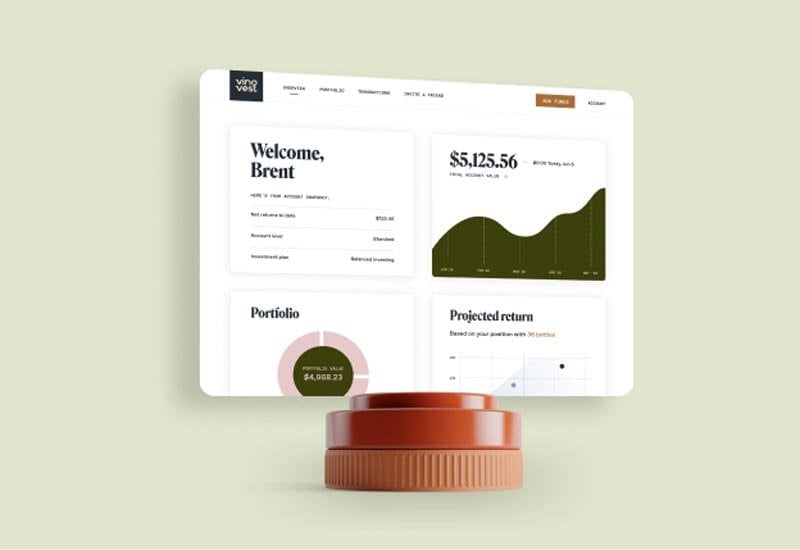
Vinovest is a leading wine investment company that lets you buy, authenticate, store, and sell fine wines from around the world.
How it Works
Get started in four quick steps:
- Sign up on the Vinovest website with your name, email, and password.
- Answer a few questions to determine your investment style (conservative, balanced, or aggressive.)
- Fund your account - a minimum of $1,000.
- Vinovest will show you the best wine matches for you based on your investment preferences. Just click on the wines of your choice to learn more about them.
- Watch your portfolio grow while sipping on a glass of Sauvignon, Burgundy, White Zinfandel, or a delightful Champagne!
Benefits
Enjoy all these benefits while investing through Vinovest:
- Best Prices: Vinovest sources wines directly from wine producers, global wine exchanges, and wholesalers. This way, you get to enjoy below-retail prices on your favorite wines.
- Easy Buying and Selling with AI-driven technology: Buying your favorite wines or selling bottles at a profit requires just a few simple clicks, thanks to Vinovest’s AI-based platform.
- Curated Wine Portfolio: Vinovest’s expert team of Master Sommeliers and data scientists will ensure only profitable bottles get into your portfolio.
- Optimal Storage and Safety: Vinovest stores all your wine bottles in bonded warehouses near the best wine regions in the world. All facilities have optimal storage conditions and are equipped with 24/7 surveillance cameras and power backup generators to ensure your wines’ safety.
- Authenticity and Provenance: Vinovest’s wine expert team traces each bottle’s provenance and guarantees its authenticity before you make your purchase.
- Low Fees and Tax Advantages: Vinovest charges a low annual fee of 2.5% (or 1.9% if your portfolio exceeds $50,000.) The fee covers all your expenses, from wine buying, selling, and storing to wine fraud detection, full insurance, and portfolio management. You also get significant tax advantages since the storage facilities charge no VAT or excise duty.
- Global Network: You get access to a deep network of limited edition wine bottles, private vineyard tours, and wine company sales. You even get the chance to join the Master Sommeliers’ wine tasting events with prominent winemakers.
- Easy Delivery: If you want your red, white, or rose wine delivered to you or a buyer, Vinovest will take care of its safe shipment.
Explore the Breathtaking Rainbow of Wine Color Nuances
Wine comes in a variety of different colors and hues. If you’re a fine wine enthusiast, you definitely want to explore all of these subtle color variations and what they imply.
You could even organize a wine tasting with your own collection of investment-grade wines (and make a profit with your collection in the long run.)
So, sign up today with Vinovest and discover all the opportunities that await you!
